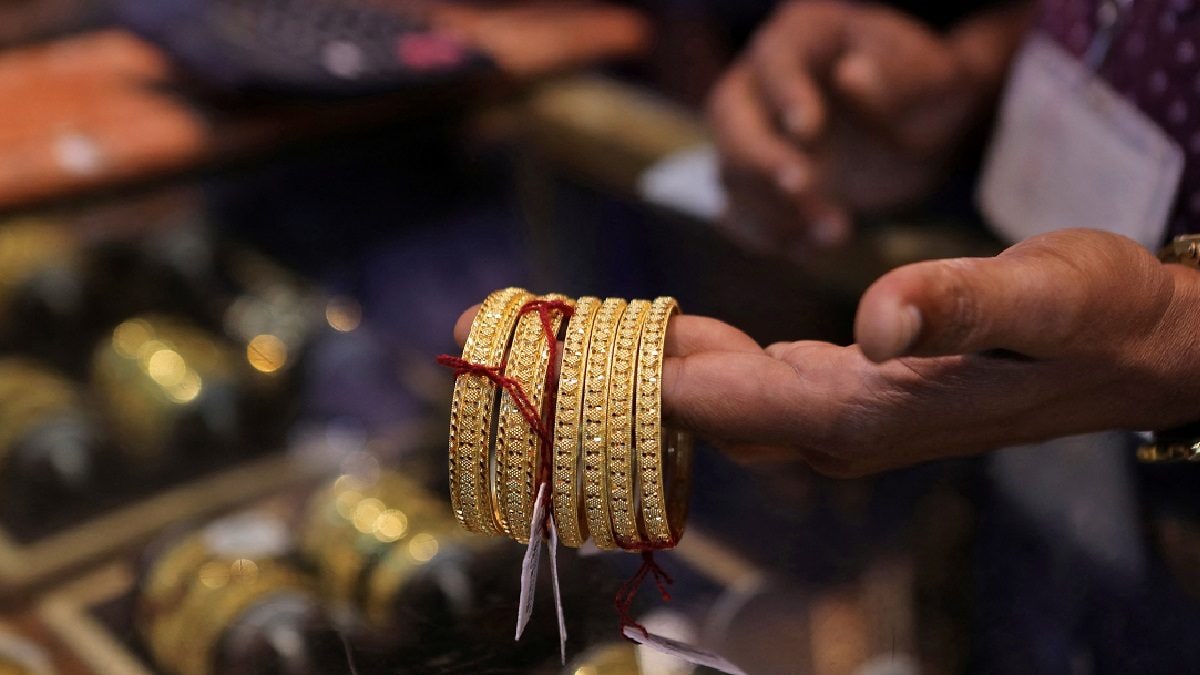Gold prices in India have recently surged to record highs, reaching ₹77,410 per 10 grams of 24k gold. This marks a significant increase of ₹600 compared to the previous day’s closing price, according to the Indian Bullion and Jewellers Association (IBJA). This upward trend is impacting various aspects of the Indian economy, from investment strategies to the Diwali festival sales, prompting both excitement and concern among consumers and businesses. The factors driving this price surge are multifaceted and interconnected, creating a complex market dynamic. The expectation of further interest rate cuts in the US, the weakening Indian rupee against the US dollar, and escalating geopolitical tensions all contribute to this unprecedented gold price rally.
Factors Contributing to the Gold Price Surge
Interest Rate Cuts and Investment Strategies
The anticipated interest rate cuts in the United States are a major driver of the gold price increase. Lower interest rates typically reduce the returns on other investment options, making gold, a traditional safe haven asset, a more attractive investment. Investors are shifting their funds towards gold as a hedge against potential economic uncertainty, thereby increasing demand and driving prices higher. This is particularly evident in the positive trend of MCX gold since its lows earlier this year. The substantial appreciation from below ₹68,000 to over ₹77,500 highlights this investment shift.
Weakening Rupee and Import Costs
The depreciation of the Indian rupee against the US dollar is another key factor influencing the rising gold prices. Since India imports a significant amount of its gold, a weaker rupee increases the cost of gold imports in domestic currency terms, directly translating into higher prices for consumers. The rupee trading below the 84 mark against the US dollar significantly exacerbates this effect. The increase in price, therefore, isn’t simply an international market shift, but a compounding effect of international and domestic economic factors.
Geopolitical Instability and Safe Haven Demand
Escalating geopolitical tensions, particularly those surrounding the Israel-Lebanon-Iran conflict, are bolstering demand for gold as a safe haven asset. Uncertainty and instability in global affairs frequently push investors towards secure investments like gold, leading to a surge in demand and subsequently driving prices higher. The lack of de-escalation in these tensions further reinforces this trend, indicating sustained pressure on gold prices in the near term. This “safe haven” effect is a well-documented feature of gold’s performance during times of uncertainty.
Impact on Diwali Sales and Consumer Behaviour
The record-high gold prices are having a noticeable impact on Diwali sales, a traditionally strong period for gold purchases in India. High prices are reducing consumer purchasing power, leading to a decrease in the volume of gold purchased. Consumers are forced to allocate significantly more money to purchase the same quantity as in previous years, dampening enthusiasm and impacting the overall sales.
Strategies by Jewelers to Mitigate Impact
To compensate for reduced sales volume, jewellers are adopting various strategies. Many are offering discounts on making charges to entice customers and stimulate sales during the Diwali season. These discounts help offset some of the impact of the high gold price, keeping gold purchases more feasible for budget-conscious buyers. However, these measures have limits and whether they can offset the impact completely remains to be seen. A notable aspect is the level of concern jewellers have regarding meeting sales targets for this Diwali.
Future Price Predictions and Outlook
The current upward price momentum for gold in India is substantial. Analysts predict a potential upside target of ₹78,500 in the coming trading sessions. However, there’s a key support level around ₹75,000 which, if breached, might indicate a significant price correction. As long as interest rate cut expectations and geopolitical instability persist, however, a continued bullish outlook remains most likely. There’s little expectation of the key market drivers for gold increasing quickly, leading many experts to remain optimistic on future price gains.
Considerations for Investors and Consumers
For investors, this scenario presents a mixed bag. While higher gold prices yield substantial gains, the potential for market correction or a shift in investment appetite presents a degree of risk. Meanwhile, for consumers, the high gold price impacts purchasing decisions significantly. The options between high costs or reduced purchases have become the key factors deciding on purchases in India’s vital gold market. It remains to be seen which will weigh more heavily over the short-term.
Take Away Points:
- Gold prices in India have hit record highs due to a confluence of factors including expected US interest rate cuts, weakening rupee, and geopolitical tensions.
- These high prices are impacting Diwali sales, forcing jewellers to offer discounts.
- Analysts predict further price increases, but a key support level exists around ₹75,000.
- Investors and consumers need to carefully assess the market and make informed decisions accordingly.




